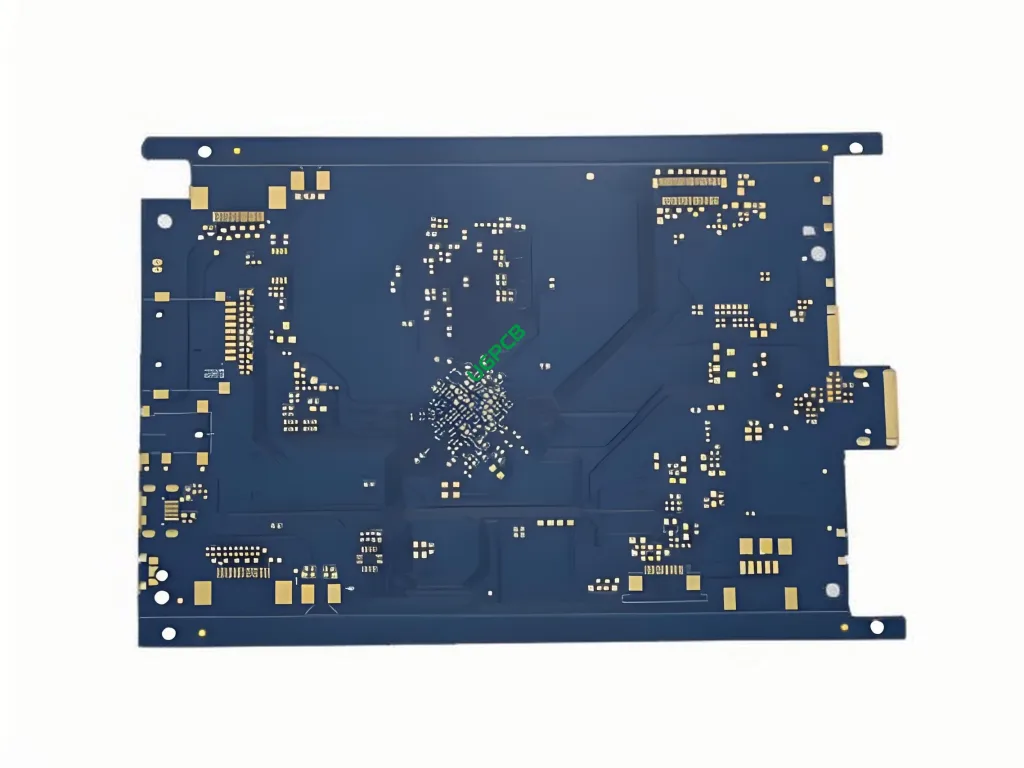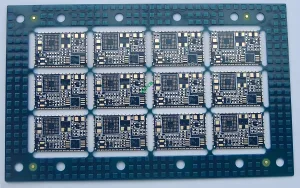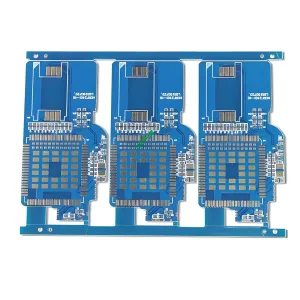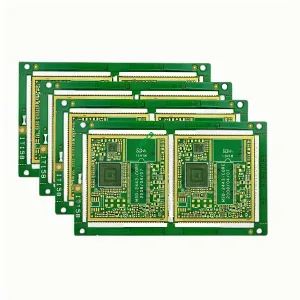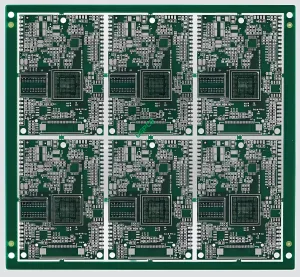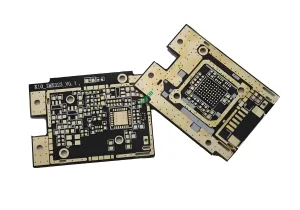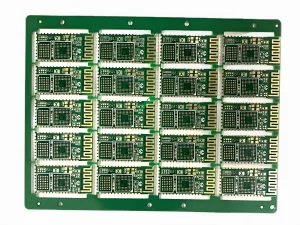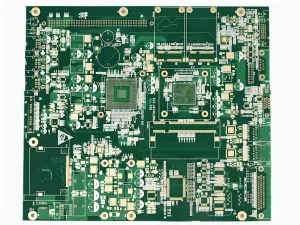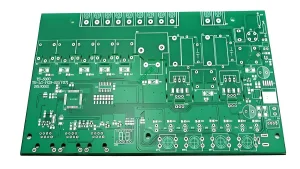の紹介 6 レイヤーPCB
The 6 Layer PCB is a sophisticated electronic component designed for high-performance applications requiring complex circuitry. It consists of six layers of conductive material, typically copper, separated by insulating layers. This multilayer structure allows for greater functionality and compactness compared to single or double-sided PCBs.
何ですか 6 レイヤーPCB?
あ 6 レイヤーPCB, またはプリント基板, is an advanced electronic substrate that features six layers of conductive pathways embedded within insulating layers. These layers are meticulously arranged to create intricate circuit designs suitable for demanding electronic applications. The additional layers provide enhanced signal integrity, power distribution, and thermal management capabilities.
設計要件
Designing a 6 Layer PCB involves several critical considerations:
- 材料の選択: Common materials include S1141, S1000, and 370HR, chosen based on their electrical properties and compatibility with the manufacturing process.
- Layer Stackup: Determines the arrangement of signal and ground planes, crucial for minimizing crosstalk and ensuring reliable signal transmission.
- 銅の厚さ: Typically specified as 1/H/H/H/H1 OZ, indicating varying thicknesses across different layers to optimize performance and cost.
- 表面処理: Options like Immersion Gold or OSP (Organo-Silicon Protection) are applied to protect the copper surfaces and enhance solderability.
How Does it Work?
The 6 Layer PCB functions by providing a platform for electrical components to be interconnected through a series of conductive paths etched onto its surface. Each layer contains specific patterns of copper traces that form circuits when connected via plated through-holes or vias. The multiple layers enable more complex circuit designs without increasing the board’s footprint, making it ideal for modern electronic devices where space is limited.
アプリケーション
Due to their complexity and capability to handle high-speed signals with minimal interference, 6 Layer PCBs are widely used in consumer electronics such as smartphones, 錠剤, ラップトップ, その他のポータブルデバイス. They are also found in automotive electronics, 医療機器, and industrial controls where reliability and performance are paramount.
分類
6 Layer PCBs can be classified based on several factors:
- 素材によって: As mentioned, they may use S1141, S1000, or 370HR depending on the required characteristics.
- アプリケーションによって: General-purpose or specialized for specific industries like telecommunications, 航空宇宙, or defense.
- By Surface Treatment: Different finishes like Immersion Gold or OSP cater to various environmental conditions and soldering processes.
Materials Used
The primary materials used in manufacturing 6 Layer PCBs include:
- 基本材料: Often fiberglass-reinforced epoxy resins (FR-4), which offer excellent mechanical strength and thermal stability.
- 銅箔: Varying thicknesses are used to balance conductivity and cost-effectiveness.
- はんだマスク: Typically green in color, it protects the copper traces from oxidation and accidental short circuits.
- シルクスクリーン: A white coating used for labeling components and providing instructions for assembly.
性能特性
Key performance attributes of a 6 Layer PCB include:
- 信号の完全性: Enhanced by strategic layer placement and grounding schemes.
- 熱管理: Improved heat dissipation due to larger copper areas and potentially thicker boards.
- 機械的強度: Multilayer construction adds rigidity, reducing the risk of damage during handling or operation.
Structural Composition
構造的に, a 6 Layer PCB comprises:
- Conductive Layers: Six layers of copper traces separated by dielectric materials.
- Insulating Layers: Prevent electrical shorts between conductive layers.
- Vias: Conductive holes that connect different layers, allowing vertical integration of circuits.
特徴的な機能
Some notable features of a 6 Layer PCB are:
- 高密度: Allows for complex circuit designs within a compact form factor.
- Reliability: Multilayer design improves resistance to electromagnetic interference (エミ).
- 多用途性: Suitable for a wide range of applications due to customizable layer configurations and material choices.
製造工程
The manufacturing process of a 6 Layer PCB involves several steps:
- デザインとレイアウト: Using specialized software to create the circuit pattern.
- 材料の準備: Cutting base materials to size and cleaning surfaces.
- ラミネート加工: Stacking and bonding individual layers under heat and pressure.
- エッチング: Removing excess copper to form the desired circuit paths.
- メッキ: Adding a thin layer of metal to vias and exposed copper areas.
- ソルダーマスクの塗布: Applying the green coating to protect traces.
- Silk Screen Printing: Adding text and symbols for component placement.
- 最終検査: Ensuring quality and functionality before shipment.
ユースケース
Common scenarios where a 6 Layer PCB might be employed include:
- High-density interconnect applications in mobile devices.
- Advanced communication systems requiring low signal loss.
- Portable medical instruments needing reliable performance in harsh environments.
- Automotive electronics demanding robustness and longevity.
要約すれば, の 6 Layer PCB represents a significant advancement in printed circuit board technology, offering unparalleled complexity and performance for modern electronic applications. Its design flexibility, combined with superior signal integrity and durability, makes it an essential component in the development of next-generation consumer electronics and beyond.
 UGPCBのロゴ
UGPCBのロゴ

